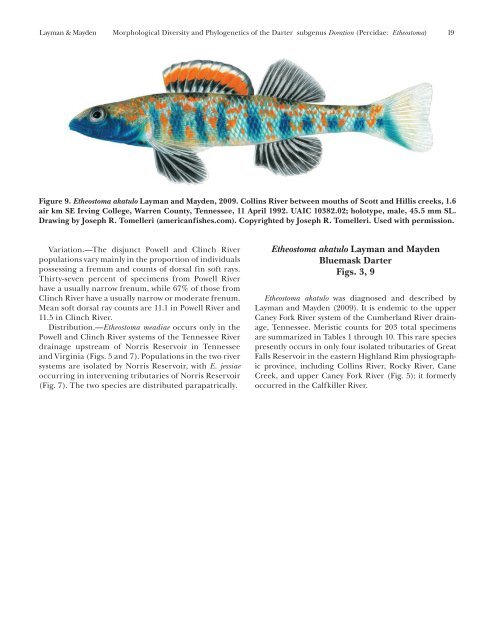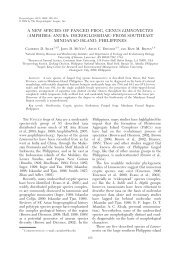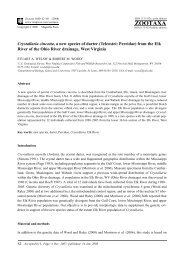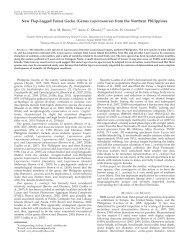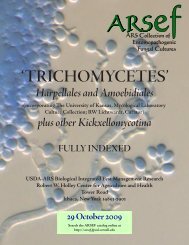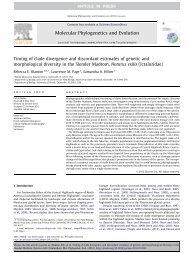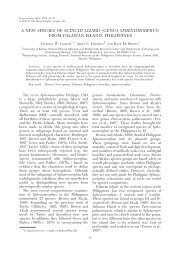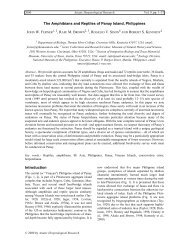(Percidae: Etheostoma), with Descriptions of Five New Species
(Percidae: Etheostoma), with Descriptions of Five New Species
(Percidae: Etheostoma), with Descriptions of Five New Species
- No tags were found...
Create successful ePaper yourself
Turn your PDF publications into a flip-book with our unique Google optimized e-Paper software.
Layman & Mayden Morphological Diversity and Phylogenetics <strong>of</strong> the Darter subgenus Doration (<strong>Percidae</strong>: <strong>Etheostoma</strong>) 19Figure 9. <strong>Etheostoma</strong> akatulo Layman and Mayden, 2009. Collins River between mouths <strong>of</strong> Scott and Hillis creeks, 1.6air km SE Irving College, Warren County, Tennessee, 11 April 1992. UAIC 10382.02; holotype, male, 45.5 mm SL.Drawing by Joseph R. Tomelleri (americanfishes.com). Copyrighted by Joseph R. Tomelleri. Used <strong>with</strong> permission.Variation.—The disjunct Powell and Clinch Riverpopulations vary mainly in the proportion <strong>of</strong> individualspossessing a frenum and counts <strong>of</strong> dorsal fin s<strong>of</strong>t rays.Thirty-seven percent <strong>of</strong> specimens from Powell Riverhave a usually narrow frenum, while 67% <strong>of</strong> those fromClinch River have a usually narrow or moderate frenum.Mean s<strong>of</strong>t dorsal ray counts are 11.1 in Powell River and11.5 in Clinch River.Distribution.—<strong>Etheostoma</strong> meadiae occurs only in thePowell and Clinch River systems <strong>of</strong> the Tennessee Riverdrainage upstream <strong>of</strong> Norris Reservoir in Tennesseeand Virginia (Figs. 5 and 7). Populations in the two riversystems are isolated by Norris Reservoir, <strong>with</strong> E. jessiaeoccurring in intervening tributaries <strong>of</strong> Norris Reservoir(Fig. 7). The two species are distributed parapatrically.<strong>Etheostoma</strong> akatulo Layman and MaydenBluemask DarterFigs. 3, 9<strong>Etheostoma</strong> akatulo was diagnosed and described byLayman and Mayden (2009). It is endemic to the upperCaney Fork River system <strong>of</strong> the Cumberland River drainage,Tennessee. Meristic counts for 203 total specimensare summarized in Tables 1 through 10. This rare speciespresently occurs in only four isolated tributaries <strong>of</strong> GreatFalls Reservoir in the eastern Highland Rim physiographicprovince, including Collins River, Rocky River, CaneCreek, and upper Caney Fork River (Fig. 5); it formerlyoccurred in the Calfkiller River.


